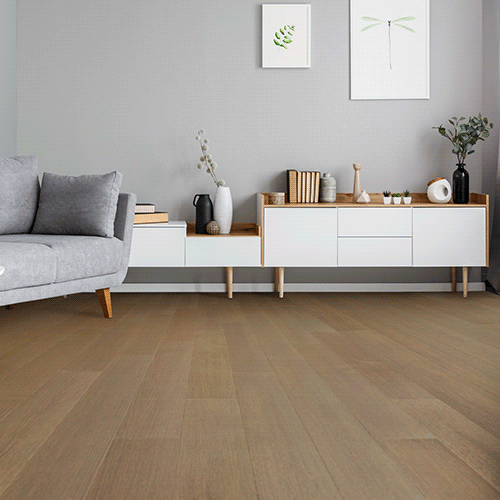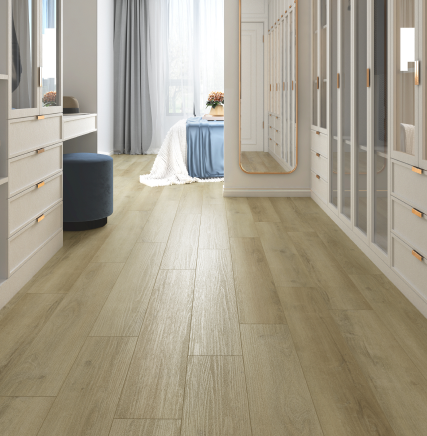CHOOSING CARPET
What to Know Before You Buy
Replacing carpet in our homes is not something people do often. In fact, many homeowners will only shop for new carpet a few times in their lives and those shopping experiences are probably separated by decades. With so much time between purchases and with so many options to consider, it is easy to be confused and hard to know where to start.
Let’s change that experience. As homeowners, we often pour over options in the constantly-changing world of flooring. This guide is going to give you a walkthrough of carpet choices in a way that will leave you feeling confident about your options and your final decision. If you are thinking about replacing your carpet, here’s an overview of the most important things to know when shopping for and living with carpet.
- Carpet Materials: Fibers and constructions
- Carpet Styles and Types
- Understanding Carpet Pile & Weight
- How to Choose a Carpet for your Lifestyle
- How Much Does Carpet Cost?
- Shopping for Your New Carpet
- Maintaining Your Carpet
Carpet Materials: Fibers and constructions

A lot goes into creating beautiful carpets. The style, feel, texture, and function of the carpet changes depending on the materials that make up the carpet. We’ve simplified what you need to know about each of the carpet fibers and carpet constructions so you can better choose the carpet to best meet your needs.
Carpet Fibers
Fibers are what you walk on, and what make up the face of carpets. Fibers are woven into yarn that is tufted or looped through a backing, and voila, you have carpet! There are many different types of fiber used to create carpet, each with different characteristics and features. Most carpets are made from one of four main types of carpet fibers:
- Nylon
- Polyester
- Olefin
- Wool
Each type of carpet fiber offers somewhat different benefits for durability, colorfastness, abrasion resistance, and ease of cleaning. We’ve included more detail on each of those four fiber types below.
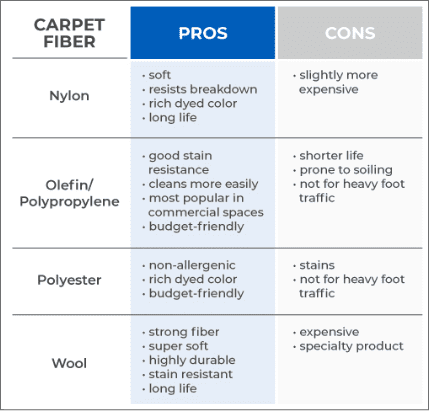
Nylon
Nylon has been around since the 1940s and is one of the more expensive synthetic carpet fibers. Generally, nylon fiber costs more to produce compared to its counterparts, so you can expect to pay more for a carpet made from nylon, all else equal. Nylon fibers are very strong, and as such, carpet made from nylon can stand up well to abrasion. Thanks to manufacturing technologies, nylon fibers can be solution-dyed, meaning the color is locked into the fiber itself, rather than being applied after production. This makes nylon carpet colorfast and fade-resistant, and spills can’t permeate into the fiber itself, making it easier to clean.
Polyester
When it comes to stain-resistance, polyester fiber is hard to beat. Whereas first-generation polyester fibers had lower resiliency, advancements in how the yarn is manufactured have greatly improved the performance of polyester, making it rival nylon for durability. Additionally, polyester is very soft, less expensive than high-end fibers, like nylon or wool, giving it an advantage in terms of price. If you’re considering the environmental impact of your home choices, you’ll be pleased to know that polyester fibers are often made from recycled materials, such as plastic bottles, and this fiber is recyclable.
Olefin (Polypropylene)
Olefin fibers are considered among the least expensive to produce, so price-wise, olefin carpet can be cheaper. When used in homes, olefin carpet works best in rooms with lower foot traffic, such as a bedroom. Since olefin is less resilient than other synthetic fibers, you will often find it used in carpet styles like berbers or loops because the tighter loop construction can help improve its longevity. In certain situations, olefin carpet makes a lot of sense – olefin performs well in areas where moisture may occur, thus it is frequently used in indoor outdoor carpets.
Wool
Wool is a premium, natural fiber that is more expensive than synthetic carpet fibers. Wool has been used as a floor covering material for centuries, and is known for being strong, durable, and long-lasting, however most synthetic fibers rival the benefits of wool, and a fraction of the cost. Many homeowners don’t think wool is worth the expensive price tag because you can get comparable performance from a nylon or polyester fiber carpet. If you are someone who wants only the highest quality carpet and budget is not much of a consideration, wool might be the right choice. For most folks, the price tag of wool makes it unaffordable, especially as a whole-home carpet.
Carpet Styles and Types
Replacing old carpet usually rates high on the list of exciting home improvement projects because it can instantly improve the aesthetic of your home. A little bit of investigation might lead you to consider a new type of carpet, rather than simply replacing your floor with the same style you have currently. Choosing the right carpet style is mostly about appearance and personal taste and what suits your décor. Here are seven different styles of carpet to consider.
1. Plush (Saxony/Textured)
Plush carpet, also known as Saxony or textured carpet, is a traditional carpet style that is popular because of its classic look. Plush carpet is what likely comes to mind when you think of carpet as it has been a time-honored choice of homeowners for decades. The appearance of plush carpet is just as its name describes – a clean, velvety, smooth finish. Because of its uniform appearance, plush carpet can work for almost any type of home décor. Traditionally, plush carpet shows footprints and vacuum marks, which people either love or hate, however you can find a plush carpet that is slightly textured to minimize “tracking” on the carpet. Check out plush carpet styles offered at Empire Today®.
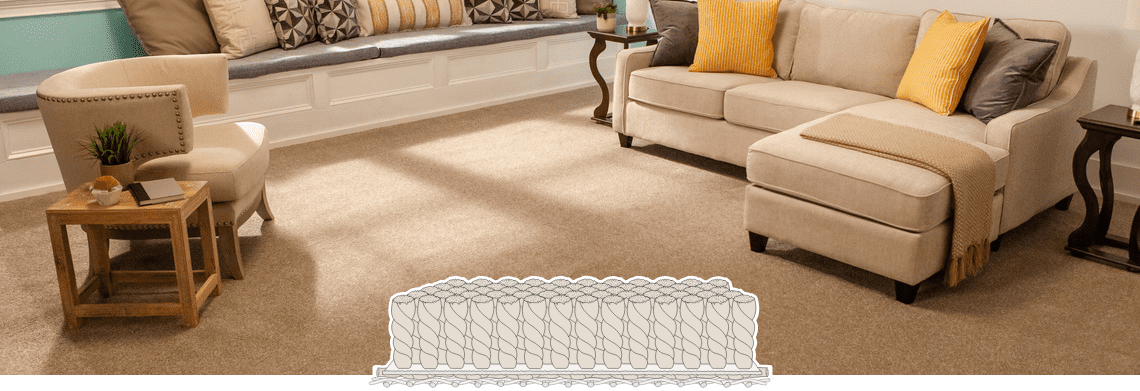
2. Berber Carpet
Another highly-recognizable carpet style is berber carpet, which is a distinct thicker looped construction. Originally, berber carpet also contained flecks of color, giving it a casual, handcrafted look. Today, many berbers are solid-colored and look very modern and sophisticated. Berber’s thick looped surface creates a dense, tight weave, making it popular for spaces that get a lot of use, like high-traffic areas and basements. Dirt and spills also have a harder time penetrating berber carpet’s knotty, textured surface, which makes it easier to keep clean. Read more about Berber carpet here.
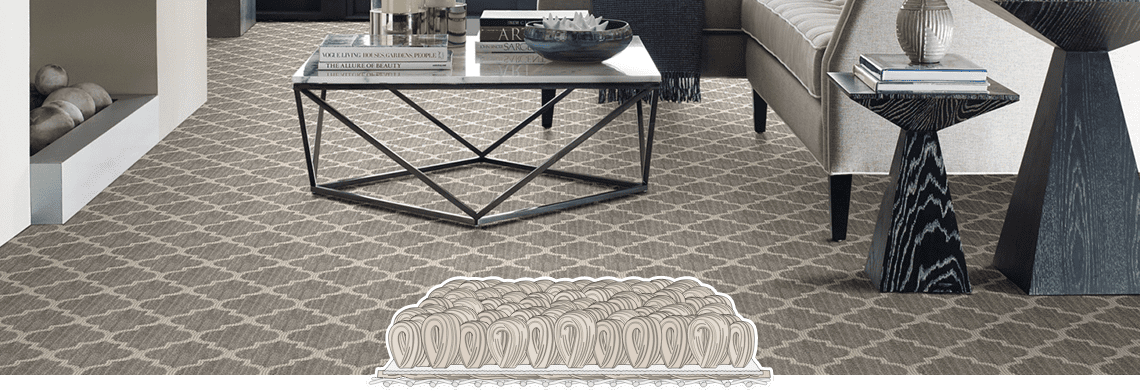
3. Frieze
While the name ‘frieze’ is not typically well-known, its hallmark style is undeniable. A frieze carpet is a modern-day version of shag carpet, minus the retro fashion faux pas. Basically, a frieze carpet is a plush carpet with longer yarn fibers that are tightly twisted. When it comes to casual living, frieze carpets are generally considered to be a must-have. The high-twist of the fibers creates a tousled look and laid-back style. Another benefit of the longer yarn fibers is that vacuum marks and footprints are more easily concealed, making frieze styles a go-to choice for family rooms, hallways, and stairs. If you love a deep, textured, and cozy carpet between your toes, check out some current frieze styles here.
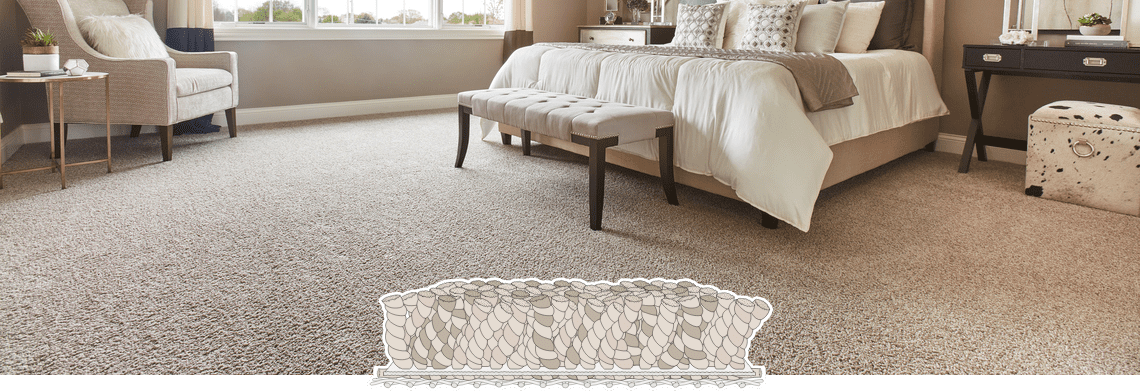
4. Patterned (Cut and Loop)
Patterned carpet, also knows as cut and loop, combines plush carpet and berber styles to create designs or patterns in the carpet’s surface. Patterned carpets come in many different visuals, mostly geometric patterns like squares, chevrons, lines, and diamonds. These carpets come in both obvious, clear repetitive patterns as well as random patterns that create more of a white noise/static look to the carpet.
Pattern carpets are a great way to dial up style and sophistication without being over-the-top. If you’re not sure if pattern carpet is right, read on for more information to help you make a decision.
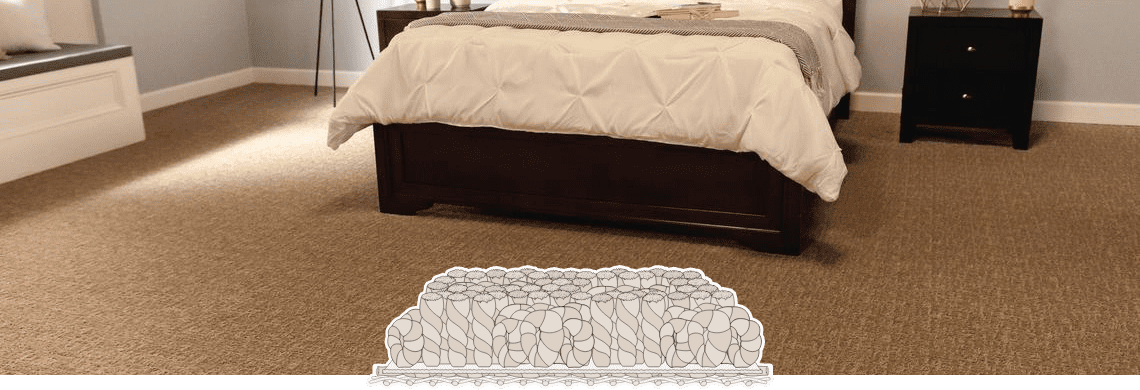
5. Carpet Tile & Commercial Carpet Looped Construction
Most often commercial-grade carpets are made with a looped construction, which is similar to berber, but much tighter. When you walk on a looped carpet, you’re not walking on the end of the fibers, you’re actually walking on the folded middle of the fibers. Loop construction is most commonly used in business and commercial buildings because it is a very durable carpet style, which can make it a good fit for high-traffic areas. However, that high durability comes at the cost of comfort with most loop construction being not as soft or cozy as other options.
Carpet tile, also known as carpet squares or modular carpets, are square, rectangular, or hexagonal carpet pieces that are laid together, just like hard surface tiles. Carpet tiles are commonly seen in commercial spaces, but can work in a residential application, like in basements, rec rooms, and enclosed patios.
They are easy to replace individually if stained or damaged, and can create interesting patterns that aren’t available to traditional carpets. Carpet tiles are a great option for heavy-use and high-traffic spaces. You’ll find lots of carpet tiles in commercial settings—think offices, retail shops, and schools.
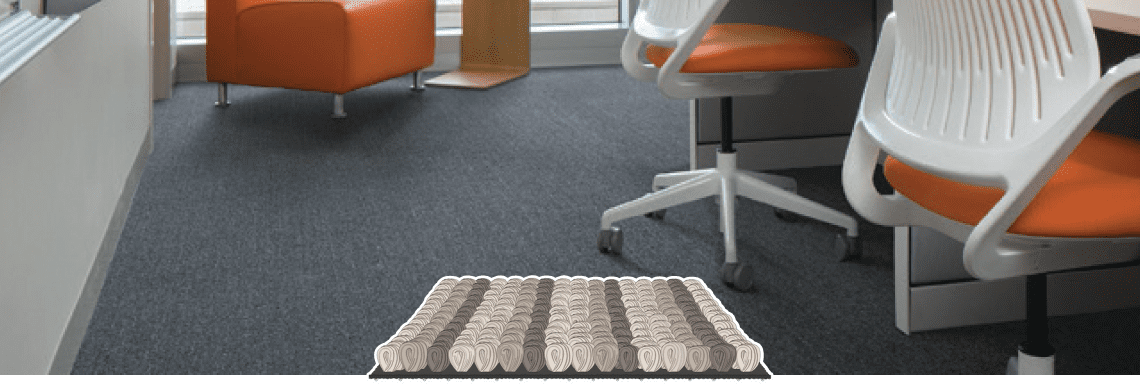
Carpet Pile Height and Weight
In addition to material and construction, carpet will look and feel different based on pile height and weight. These are factors to be aware of, but shouldn’t necessarily be the variables you make your purchase decision on. Understanding pile and weight can steer you toward carpets that may fit your needs and wants.
Carpet Pile Height
Pile is a fancy term that simply means the length of a carpet’s yarn. It’s a measurement that references the height of the fiber material in the finished carpet. A deep or high-pile carpet has longer fibers and is considered plush, whereas a low-pile carpet has shorter fibers.
- A high-pile carpet typically means the fibers are a bit looser, which creates a more plush and luxurious feeling, but comes at the cost of how easy they are to clean and maintain.
- Low-pile carpets are shorter cuts or loops and have a dense appearance. While they generally are easier to care for, they are typically not as comfortable.
- When assessing the carpet you are buying, a high-pile carpet isn’t always better quality than a low-pile carpet.

Carpet Weight
Weight can make a difference, but only when comparing two otherwise identical carpets. A higher face weight means more yarn, and more yarn can make for a better carpet. There are two carpet weight considerations—face weight and overall weight—so make sure you compare the right numbers.
- Face weight refers to the carpet fiber—the soft surface you walk on. If you’re torn between a few similar carpet styles, comparing the face weight is one way to determine higher quality.
- Carpet weight refers to the full carpet construction—including the backing. Some carpets that have a heavier overall weight may not be as high quality or as suitable to your tastes as those with a higher face weight.

Whatever you do, don’t let a retailer sell you on “stitches per inch” or SPI. This is a measure of how dense a carpet is, but varies wildly based on material and style. It’s an apples-to-oranges type comparison and won’t give you a good feel for the quality of the carpet.
By now, you’re starting to understand that carpet has a lot of variables! Because you want the right carpet for the right space and environment, it’s best to bring all of your questions to a professional. Empire Today® makes that easy with in-home appointments, focused on educating you on the products available and helping you choose the carpet that’s right for you.
How to Choose a Carpet for your Lifestyle
Choosing a carpet is more complicated than finding the best-looking style. While style is important, because, after all, you’re going to see the carpet every day, lifestyle factors will influence what carpet will work best. Whether you’re flipping a house, finishing your basement, or trying to accommodate your pets, the way you use the rooms need to be considered. Everyone wants to find the best carpet, but “best” depends on your own situation:
Pet-Friendly Carpet
If you have pets, you will want to look at carpets that are made for homes with pets. Carpet manufacturers have gone to great lengths to develop pet-friendly carpet styles designed to help you worry-less about damage. Sure, pets can have accidents, but if you choose a carpet with pet-friendly features and built-in stain protection, cleaning can be much easier. Our special PUP® Pet Urine Protection carpet is designed to help resist penetration of pet urine and other liquids, which is a must-have for any pet owner no matter how well-trained your pet. If you love carpet as much as your pets, there is common ground to be found.
Also, try to stick to cut pile carpets, like plush or frieze because they are less likely to snag from your pet’s nails. Loop construction carpets, like berber and patterned, can get caught on your pet’s claws.
Pet accidents and water spills are inevitable, but carpet with strong stain and soil protection should clean easier if taken care of quickly. Here’s a few additional suggestions for carpet if you have pets.

Carpet for High-Traffic and Heavy Use
Carpets for high-traffic areas like hallways or staircases, and heavy-use rooms need to be able to hold up to everyday foot traffic and harder use. When shopping for the best carpet for family rooms, hallways, and stairs, look for a higher-quality carpet that has a good wear and texture retention warranty. Although some change will eventually occur in the texture of your carpet, routine vacuuming combined with professional cleaning, as recommended by the manufacturer, will help minimize the change.

Carpet that Resists Stains & Soil
If you’ve ever searched online for, “How to remove stains from carpet,” you probably understand that a carpet that is stain resistant is really important. We cover good options for stain-resistant carpet in this article. Berber and frieze carpets are well known to be a great option to help hide stains. Because of their speckled appearance, any changes in color from dirt and stains are harder to see.

Best Carpet for Basements
If you have finished areas below the grade in your home, carpet can still work great, just be sure to consider the elements. Some carpet doesn’t do well in dark, moist environments because they create the perfect setting for mildew and mold. That said, other types of carpets are specifically designed to handle these types of environments. You might have heard that you should never put carpet in your basement, but there are actually great options to choose from.
- Synthetic fibers like nylon, polyester, and olefin will be your best choices. These fibers allow for more airflow, which can help keep your carpet dry and fresh in your basement.
- Stick to low pile carpets with higher face weights. Consider carpet tile and berber for basements used as rec spaces.

How Much Does Carpet Cost?
Sometimes, when shopping for carpet, determining the cost can feel like a guessing game. If you walk into a big box store or carpet retails shop, you’ll often find carpet priced by square foot or square yard. Beware though: at most retailers, the ‘price per square foot’ does not include carpet padding, installation, and materials.
Other costs—which are really important parts of the job—that you might not want to get stuck managing yourself, include moving furniture, hauling away your old floors, and clean up.
When comparing how much it costs to replace carpet, you need to be sure that you consider everything that needs to be done in order to complete your project. Here’s a simple checklist you can use when you shop to be sure you’re comparing apples-to-apples total prices.
Carpet Cost and Pricing Checklist
- Carpet Cost
- Measuring
- Professional Installation
- Padding
- Moving Furniture
- Haul away of old flooring
- Other materials (tack strips, transitions, thresholds)
- Clean up
Empire® provides an all-inclusive price estimate that considers everything needed to complete your carpet project. It’s no-stress, transparent pricing, so you can focus on finding the carpet that meets your needs.
Carpet Flooring Per Square Foot
To get an accurate price estimate, a professional will need to take accurate and detailed room measurements and understand any special considerations of your home. Many people think that carpet pricing is as simple as calculating the square footage of your rooms and multiplying that by a cost per square foot, but it’s not. There is no such thing as a “typical” carpet installation because every home is different. Be wary of any retailer that gives you a price over the phone, in-store, or online – those prices are little better than a guess. The best way to get an accurate price is to have someone visit your home to understand what is required to install your carpet. Here’s some items that make per square foot prices unreliable.
Professional Carpet Installation
Quality installation can affect the finished product of your carpet. An inexperienced installation could leave sections of carpet that aren’t properly stretched, leading to ripples and buckles. And let’s face it, DIY installation of carpet is incredibly difficult, if not impossible. Few people have the specialized tools or know-how to properly install carpet.
As you start shopping around for carpet, look into how much it will cost to get the carpet installed and be sure to include it in the overall cost of your project. Empire Today® makes this step easy by providing an all-inclusive price estimate.

Carpet Padding
At many retailers, padding is priced separately from carpet. You won’t see the padding once it is installed, but that doesn’t mean you should overlook it when buying your carpet.
Padding acts as the foundation for your carpet. If you’ve ever walked on something like carpet tile on top of cement, you know how unforgiving it can be for your feet. Without a pad, carpet is less comfortable, plus most carpet manufacturers require appropriate padding as part of their warranty.
The padding also provides stability, insulation, noise reduction, and can even extend the life of your carpet. In other words, it’s not something to be ignored. The price of carpet padding will depend on its thickness, density, and construction. Here are the common carpet padding types:
Rebond Padding: The most common type of padding, this is made from recycled foam, and available in different densities for comfort and thickness. Rebond padding can come with a moisture barrier that is designed to help prevent liquid from seeping into the actual foam padding where it could cause damage.
Foam Padding: This type of carpet padding looks and feels similar to rebond padding, but costs considerably more. Memory foam is squishy, and over time if the structure under the carpet is softer, the carpet may get damaged.

Budget-Friendly Options
Upgrading your floors on a budget doesn’t mean you’re going to be stuck with low-quality carpet. The good news is that carpet can be one of the most budget-friendly flooring options available because it typically costs less than wood or tile floors.
Like any other larger home improvement, replacing floors is a decent-sized expense for any homeowner. A great way to make replacing carpet more affordable is to consider financing the project. The advantage of financing is that it allows you to make monthly payments instead of having to pay the entire cost of the carpet home improvement at once. Empire® has two special financing offers available to its customers that are designed to allow you to replace your carpet now but pay for it over time.
How to Shop for Carpet
Being informed will make your carpet shopping experience much more effective, and more enjoyable. Working with a flooring expert to choose your carpet will help make sure your new carpet works well for your style, needs, and budget.
- Know your total budget. Remember that the carpet, padding, and installation (and possibly removal of your current flooring, furniture moving, and other costs) need to fit within that budget.
- Decide which carpet style you’re in the market for. This is the first big decision you have to make when evaluating your options. When you’re picking your style, don’t worry about the look as much as the function.
- Speak up about which features are most important to you. Primary considerations and needs might include: high-traffic areas, comfort level, high stain resistance, and allergen-reducing features.
- Be sure to talk about padding options. The best place to make your carpet selection is actually in your own home. These days, shopping at home is much preferred over multiple trips to busy, impersonal stores. With an at-home shopping experience, your questions can be answered without waiting around for an employee to be available or struggling to find someone who knows what they’re talking about.
The best place to make your carpet selection is actually in your own home. These days, shopping at home is much preferred over multiple trips to busy, impersonal stores.
With an at-home shopping experience, your questions can be answered without waiting around for an employee to be available or struggling to find someone who knows what they’re talking about.

Empire Today® is an established and trusted flooring company. An experienced flooring professional will take the time to listen to you, learn your unique needs, understand what you’re looking for, and recommend the right floors for your situation.
Note: A good place to start is with Empire Room Visualizer. You’ll also enjoy the benefit of seeing exactly what your favorite carpet styles look like with your lighting, paint colors, and furniture.
Plus, the pricing you get from Empire is all-inclusive - product, materials, removal, haul-away, and installation—and is provided the same day as your appointment. With no surprise costs, you’ll feel confident that your preferred carpet is within your budget and the installation will be handled professionally.
With home delivery of nearly everything you can imagine, there’s really not much reason left to shop in-store for carpet. Empire Today® can bring every sample you’re interested in, right into the spaces where the flooring will be installed.
The benefit of seeing carpet options where it will be installed before you invest is absolutely invaluable, making loving your choice for decades that much easier.
Carpet Warranties
Carpet warranties differ between manufacturers. Generally, a wear warranty will refer to loss of pile, and a texture warranty will refer to the appearance of the carpet. When looking for stain resistant carpet, warranties and special product features are key considerations.
It is also important to understand what the terms “stain” and “soil” mean when you’re shopping for specific types of carpet. In the carpet world, a “stain” is something that changes the color of carpet, whereas “soil” is considered a spot that collects on the carpet fibers. While many carpets come with added stain and soil protections, there are many that don’t, so you want to be sure you choose a carpet that has some type of coverage.
Since Empire® carries a large variety of flooring, and as we said—warranties vary between manufacturers—you’ll find warranty information available by product from this page.
Carpet Maintenance
Once installed, make sure you protect your carpet investment by regular and seasonal care. Carpet can stand up to a lot of life lived on top of it, but like any surface, maintenance goes a long way to keeping it looking pristine. Being consistent and proactive with cleaning will make a huge difference!
- Vacuuming is a must. For high-traffic areas, vacuuming at least twice a week can help prevent dirt and soil from damaging carpet fibers. For low-traffic areas, you can vacuum twice a week.
- Tackle spills immediately. The quicker you get to cleaning a spill the better. Use a white towel to absorb the spill, blotting with cool water. Never scrub or rub your carpet harshly, as that could cause fuzzing.
- Be careful about using carpet cleaners and deodorizers. Despite good intentions, you might end up damaging your carpet if you use chemicals on it. Instead, consider having your carpet professionally cleaned every six to 12 months using a hot water extraction method or “steam cleaning.” Carpet deodorizers are used to neutralize smells, but they might not be your best option.
Carpet Cleaning Services
While not an upfront cost, you should keep in mind the costs to professionally clean your carpets. By removing dust mites, dust particles, bacteria, and other allergens that can reside deep in the carpet fibers, regular deep cleaning will extend the life of your carpet dramatically.
It’s tempting to rent carpet cleaning machines and take a DIY approach, but the best results will come from a professional service. They can help address stains from pets, accidents, and heavy traffic. It’s just like car maintenance—it keeps your carpet looking newer, longer—protecting your investment.
Also, some manufacturer warranties require regular cleanings. If you purchase your new carpet or flooring from Empire® you can take advantage of the Empire Service Plan that protects your purchase, and includes credits for carpet cleaning.
Next Steps
Keep this guide handy while you go through your purchasing process. Now that you know the variables for choosing a great carpet, you’re ready to shop!
Empire Today® can be at your home with 100s of carpet and flooring options as soon as today, and provide professional installation as soon as next-day. If you’re still not sure it’s carpet that you want, that’s okay. An experienced flooring professional will bring many different flooring options along with their flooring experience and expertise.
An in-home appointment is totally free, and a great way to get one step closer to finding your perfect floors.
CARPET & FLOORING: Next Day Installation on in-stock styles only. In select areas, Next Day Installation may not be available every day. Floor preparation may add to installation time.


